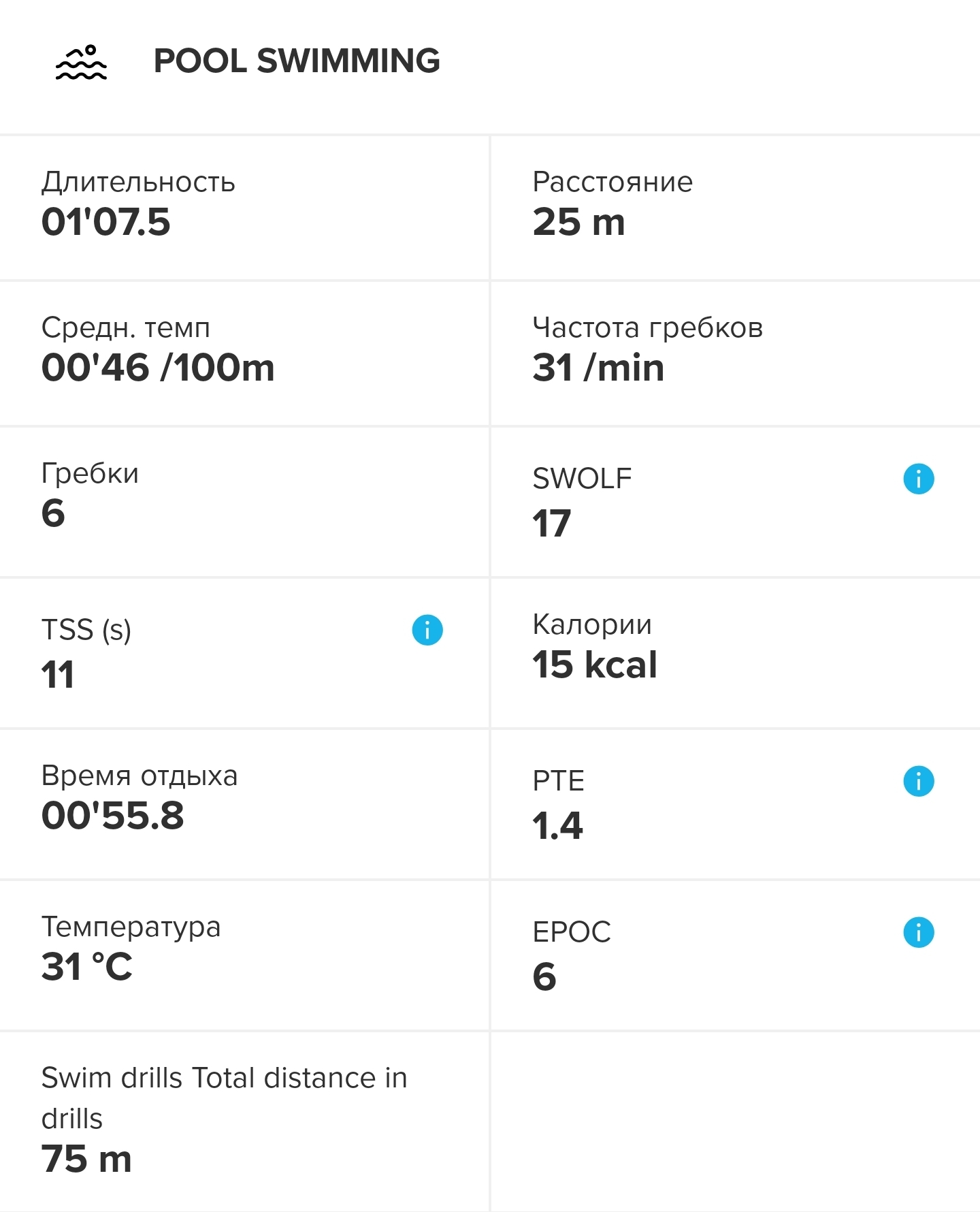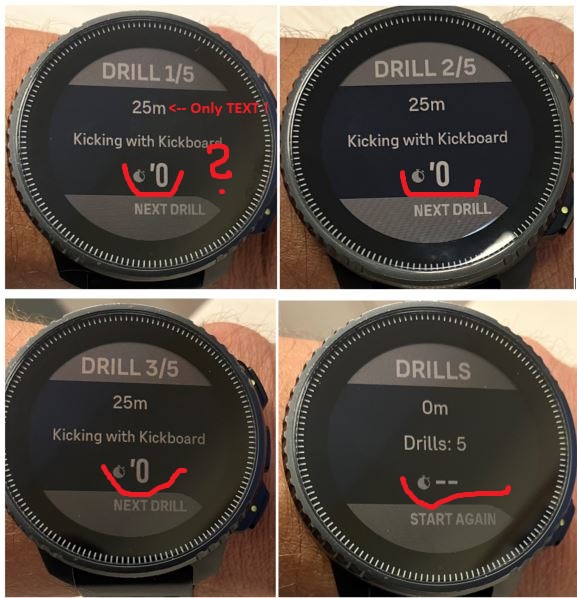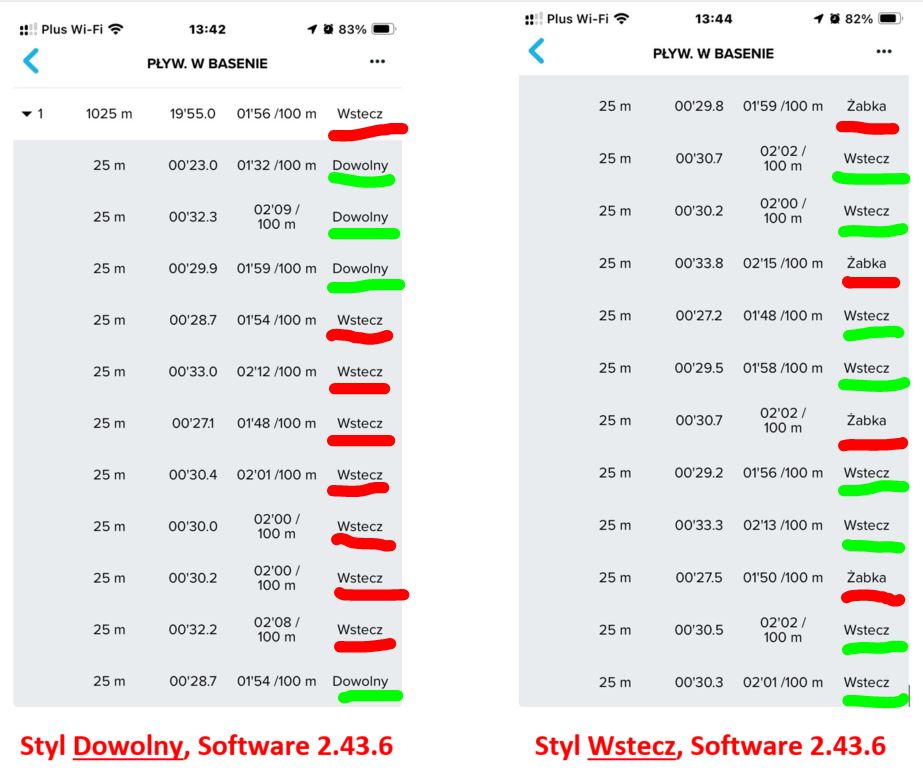Software Update 2.43.8/.12 (2025 Q2)
-
@Egika Thank you. I’ll try to wait longer. But my process is still the same. I’ll wait for the GPS signal and get in the water. I know it’s better to wait a while. But I didn’t have any problems last year. I swim breaststroke.
-
@Pavlas then you have had exceptionally good luck in the past.
Technically the following is happening with GNSS reception:
The satellites continuously send out their position data and time stamps. The watch (with an incredibly small antenna to actually receive signals from space) tries to lock on those transmissions. It uses assumptions, where the satellites should be and which satellites to look for (from the AGPS data updates daily). Still those assumptions are just the starting point, and subsequently one after the other satellite is taken into the equation to calculate the current position. The data rate is pretty slow and the receiver needs to read the time stamps, the satellites are sending.
Position fix is possible, when a connection to 4 or 5 satellites is established. This is, when the arrow in the watch becomes green. Still, if the connection to one or more satellites is broken, the position fix will be dropped. This can easily happen if the satellite is just above the horizon, or if you move the watch antenna away facing a different direction. Thus it is crucial, that the watch is able to follow the transmissions of as many satellites as possible.
For outdoor activities usually the watch can still lock on more data streams while the activity has already started.In the water, there is no GPS reception, as the satellite signals don’t penetrate water. This means, that the watch only has fractions of a second, to read data from the (badly positioned) antenna that has super weak signals to acquire from satellites far away in space, before it is submerged again.
You can help the process by waiting after the green arrow comes on. Green arrow means, the watch uses at least 4 satellites. Waiting longer ensures, that more satellites are added into the equation. If some are lost later, others can be used. 2-3 minutes is a good starting point.
Plus you need to bring the watch above the water level periodically for it to continue calculation your position. Breast stroke is not really suitable for this.
Conclusion: If you had good results in the past with not much waiting and swimming breaststroke, it is almost a miracle.
-
@nseslija sorry I can’t see power graph in your activity, how does it look? Are there drops also in fit file? So power data is wrong even when syncing to other platforms (intervals.icu for example)?
-
Went for a training ride with power meter (Rotor INPOWER) and I can say with confidence that while riding uphill (non stop pedalling) I saw many times the power zeroing, but then on the log/SA no zeros are showing for those uphill segments.
Is this replicated?
-
@mlakis send me a link to your activity
-
@GiPFELKiND said in Software Update 2.43.8/.12 (2025 Q2):
@Stefano-M64 downgrade to 2.37.48 its since many updates the BEST Firmware and stable without Crash. With every new Update Problems like yours comes to the watch. Why upgrade when the system is running without Problems.


I understand your view, but don’t think avoiding upgrades it’s a good solution. Luckily my Race never crashed, just hope that this odd map zoom-out redrawing issue can be solved asap!
-
@Pavlas I had a similar experience with open water swimming last weekend, it’s very inaccurate, worse than last year!
-
@Egika I had a good experience with breast stroke swimming and only waiting for the green arrow last year, but now, it’s worse. The location/sea is the same…
-
@sky-runner absolutely agree
We need rest time between intervals, not the total.
Like it is done in “swim timer” app.
-
Where I can report about problems with SuuntoPlus apps?
I want to report and explain why “Swim drills” app doesn’t work in reality (it looks like the one who did the app doesn’t know how the watch actually work in swimming 🤨).
-
Me too. Every 60 seconds the power is reset to 0 and starts to count again the 10 seconds average (this is my data field).
Introduced with the recent firmware update. 🫤
-
@pilleus So only power field on watch is affected, activity in SA is ok?
-
@Александр-Даниленко said in Software Update 2.43.8/.12 (2025 Q2):
Where I can report about problems with SuuntoPlus apps?
I’d guess the only place except writing to support@suunto.com is at this forum and its specific area https://forum.suunto.com/category/46/suuntoplus-sports-apps
I have not had the opportunity to try out the ‘Swim drills’ app yet, but from a quick glance at it when installing on watch it seems like we have to configure exactly how many reps of anything we would do, how many metres and in which order. It looks more like a rigorous ‘structured workout’ app for running than the simple drills mode I was anticipating; where we simply press ‘Lap’ button and adjust or confirm the length of the just done drill. And the drill itself is either defined on a whiteboard, plastic-wrapped paper sheet or in an ad hoc brain decision, not gang pressed like this unto our poor watches.
-
@Likarnik power graph is ok on SA and Strava, maybe is filtered I see drops on the watch, very often, and not gradually drop to zero like when I stop pedaling but immediate. I don’t see drops in cadence, same device, and HR, so I doubt it’s a BT drop. I didn’t look in FIT file yet…
-
Activity in SA is okay

It’s not a problem of the BLE connection, because cadence is working fine.
-
-
@Inge-Nallsson yes
I configurated everythingThe problem that the time counter doesnt count time if you dont have a hand movement. This is because when they were writing software, they linked drills time to a “moving time”, not the total time.
But the whole point of the drill mode is that it should count time and distance when there is no hands movement (or it should give an opportunity to put that distance manually, like it is done in garmin).
So this specific suunto plus app is completely useless, when in your drill you dont have hand movements (like a kickboard kicking, for example).
Just shortly to show how bad and absurd this app is, look at this screenshot. Drills distance (75m) bigger than total distance (25m)? Wtf?!

P.S. Actually it is a huge problem of swimming in Suunto watch, because it is too much linked to moving time instead of total time. If in a “Pool swimming” you press lap button without swimming, it will always show you zero time. I dont know why Suunto didn’t do it normally like in other sport modes, where you press lap button and it gives you a time between 2 lap button presses. Feels like someone in Suunto just cant understand the problem and/or doesn’t know how their watches work.
-
@Likarnik I hope so

-
@Inge-Nallsson, @Александр-Даниленко
Unfortunately, what Suunto Plus Swim Drills “Kicking with Kickboard” offers is useless and does not work!
No time and distance measurement after pressing LAP.
Only configured screens change.
SuuntoApp does not have statistics for such an exercise.
Waste of time!
A similar situation with the new algorithm for counting the number of pools.
They started to change the old algorithm that worked and unfortunately the counting got worse.
After a few updates, the counting returned to normal, so why modify it as it worked?
By the way, the recognition of swimming styles was broken with these changes!
There is still no information when it will be fixed!


According to the old software and some older Suunto models I can swim styles but not according to the new algorithm?
-
@Александр-Даниленко said in Software Update 2.43.8/.12 (2025 Q2):
So this specific suunto plus app is completely useless, when in your drill you dont have hand movements (like a kickboard kicking, for example).
Yes, I agree. Tried it out myself today. Since I usually end swimming sessions with Kickboard I had ‘programmed’ the App with 50 metres Kickboard as the first step, and then 50m Kickboard as step number two - 'cos I do alternating breast/freestyle legwork.
The positive thing was that we can go forwards and backwards in the list of steps with top and bottom buttons, or repeat the whole list when ended. The negative, as you point out, was that no time was shown during the steps due to no arm movements, AND no distance got logged for my 4x50m kicks!
As for the whole handling of ‘Lap button’ presses in swimming… I wrote a lengthy post about it some time ago on this forum and at least one of the moderators (I think it was) understood the problem. Not much else we can do…
